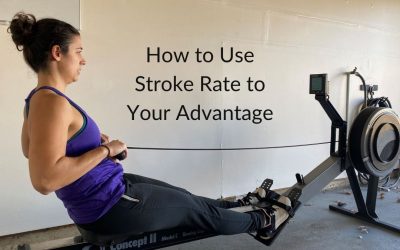The Pause Drill
Another week, another drill.
The pause drill is exactly what it sounds like. You pause in the middle of your stroke at certain places in order to achieve a specific technique fix.
For example, if you bend your knees early on the recovery before the hands are extended and the body rotates forward, you can pause at body over before your legs move. This allows you to take that second to make sure you are in the correct body position before continuing your stroke.
You can also pause at arms away before your body hinges forward from the 11 o’clock position to the 1 o’clock position. This would be a good place to pause if you needed to work on getting the arms extended before hinging your body forward.
Pausing at half slide would make you think about rushing up to the catch too fast. This would be good if you are used to pulling yourself up the slide.
If you’re looking to improve your acceleration of your drive, you could practice pausing at the finish. You need to be careful here though, because you don’t want to start rushing up to the catch when you’re practicing pausing at the finish. Also, be careful that this pause at the finish doesn’t become a habit in your normal stroke. Pausing at the finish can be useful for practicing acceleration, but don’t get stuck doing it all the time.
I don’t recommend pausing in the middle of movements. For example, don’t pause when the arms are only halfway extended, or the body has only slightly hinged forward. The only movement you should pause in the middle of is the slide up to the catch.
Pick one place in your stroke to put a pause, and every time you reach that position, pause for a 1-second count. Over the course of a couple of strokes, slowly shorten the pause so that eventually the pause doesn’t exist anymore.
If you find yourself reverting back to your old technique habits, throw in that short pause for a couple of strokes to help you reset.
Here is a short video showing you what this looks like:
How to Improve Your Rowing for WODs
Workouts can take all shapes and sizes. You can go years without repeating a workout that doesn’t have its own name. Sometimes there’s rowing, sometimes there’s not. Most athletes want to get through the rowing portion to get on with the other part of the workout....
How to Use Stroke Rate to Your Advantage
Whether you row in your garage or in a gym, there’s a number on that monitor that you should be paying attention to. And that’s your stroke rate! Most people are only concerned about the split that they are pulling. While that number is very important, it shouldn’t be...
Everything to Know About the Catch Position
There’s a lot that goes into having a good catch position on the rowing machine. A good catch allows you to start your stroke off right and sets you up for success each and every stroke you take. Here is a picture of a good catch position: Here are the big things...



